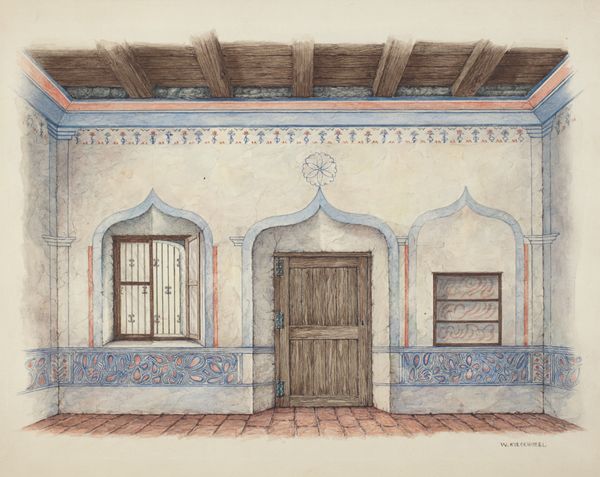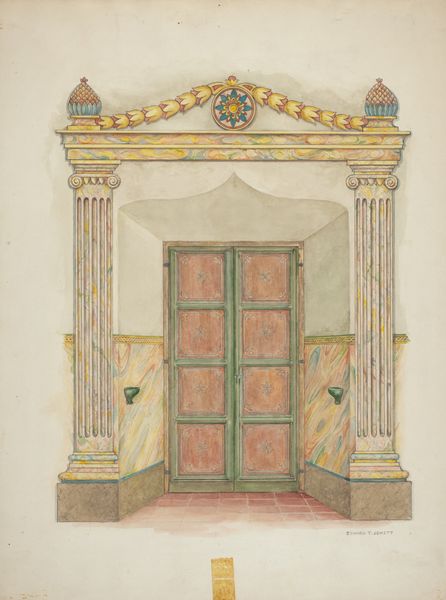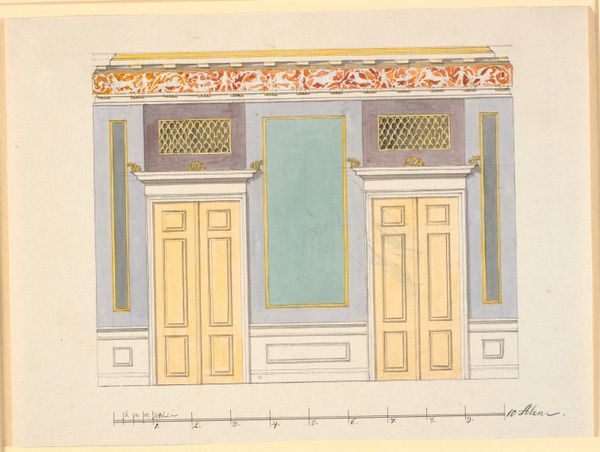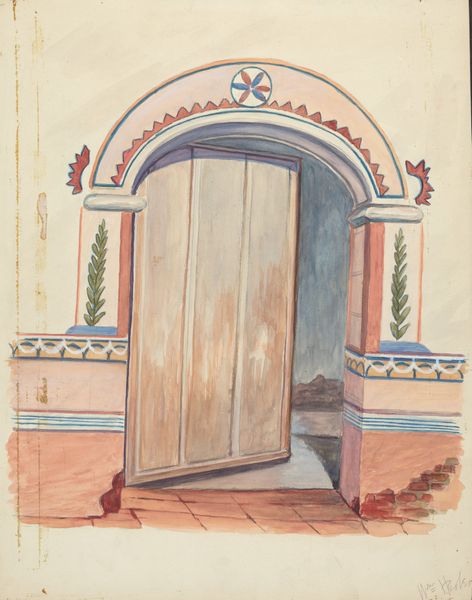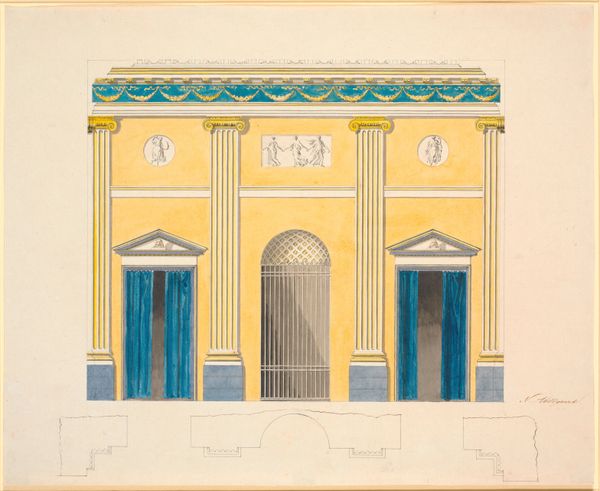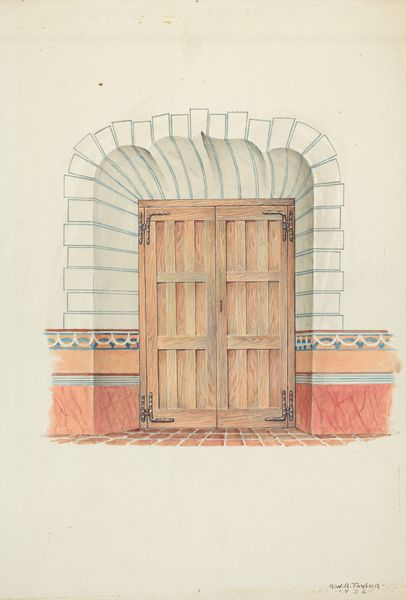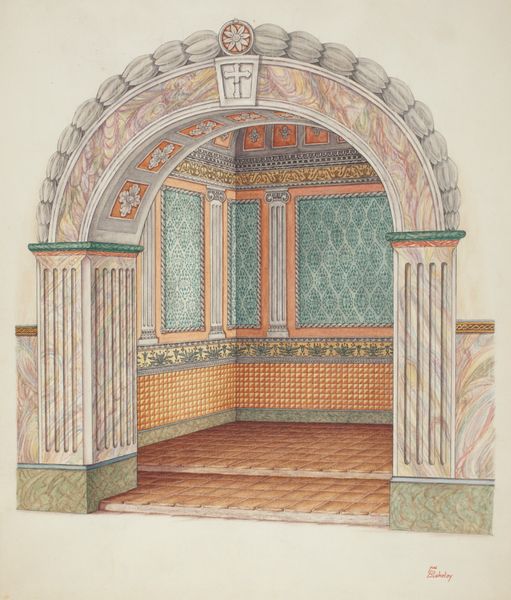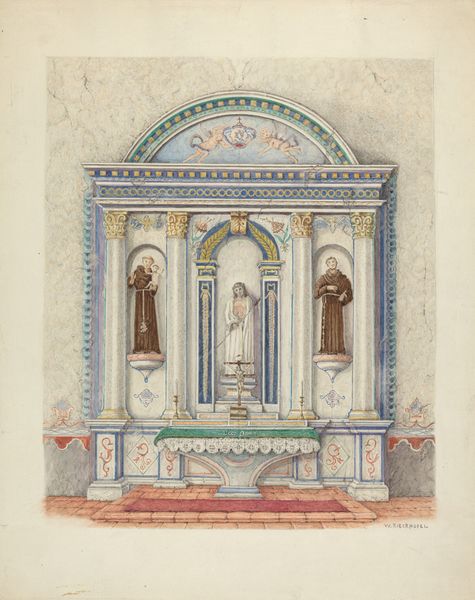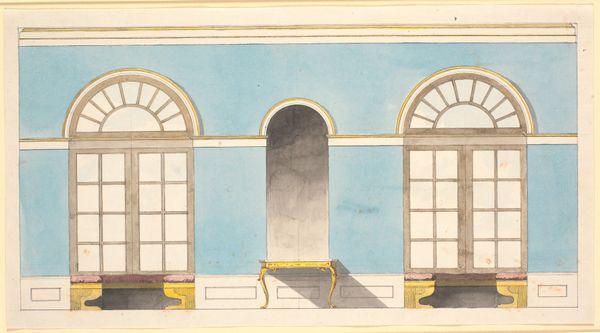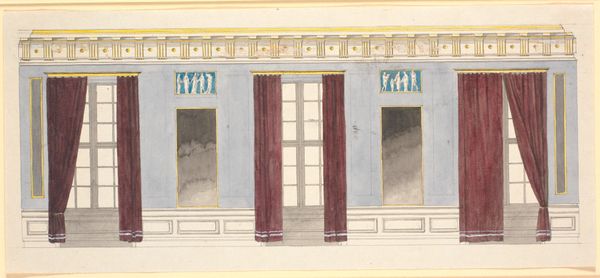
drawing, fresco, watercolor, mural, architecture
#
drawing
#
narrative-art
#
fresco
#
watercolor
#
geometric
#
line
#
watercolour illustration
#
academic-art
#
mural
#
watercolor
#
architecture
Dimensions: overall: 26.9 x 35.5 cm (10 9/16 x 14 in.) Original IAD Object: none given
Copyright: National Gallery of Art: CC0 1.0
Curator: This watercolor drawing presents what’s called "Wall Painting (Reredos)," crafted by Cornelius Christoffels in 1941. Editor: My initial reaction is a sense of airy lightness. The colour palette of soft blues and oranges create this peaceful harmony, though the symmetrical composition feels very static, almost staged. Curator: Right. And this staging speaks to the inherent institutional elements. The reredos, typically an altarpiece or screen displayed behind an altar, is clearly loaded with religious context. The fresco evokes that association of a sacred interior and how, institutionally, art and worship were profoundly intertwined. Editor: Exactly. The stylized floral patterns and the geometric shapes within the arches hint at a larger conversation on symbolism in a church environment. However, I wonder about the potential for these structures to become sites of exclusion or limited views on gender roles if that interior does not feel welcoming and accepting for all who seek respite or knowledge. Curator: Absolutely. Consider how such imagery can be leveraged to control specific cultural and social norms within the community—reinforcing patriarchal structures that directly impacted the lives of its female parishioners. The placement and dominance of the reredos reinforces hierarchical ideas within the religious space, and maybe even within the household. Editor: It is hard not to be seduced by the soft colors of watercolor medium as they have this innate tranquility. Nevertheless, your critical point of viewing architecture, even artistic renderings of architecture, as active social and political tools is absolutely correct. It prevents us from passively observing "beauty," and instead charges us with deconstructing the message behind every artistic choice made by Cornelius. Curator: Indeed. We are faced with art that, despite its gentle aesthetics, reflects more of the powerful politics inherent in religious institutions during that time. Editor: It has provided us with the crucial tools to engage with the artwork at the intersection of art and societal concerns.
Comments
No comments
Be the first to comment and join the conversation on the ultimate creative platform.
